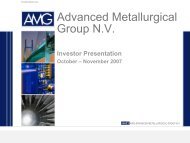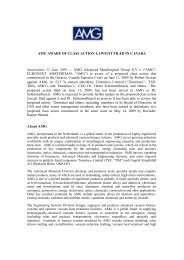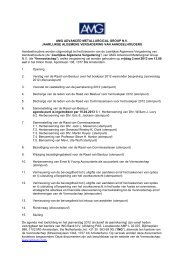Quasi-mono Silicon: The best of both worlds
Quasi-mono Silicon: The best of both worlds
Quasi-mono Silicon: The best of both worlds
Create successful ePaper yourself
Turn your PDF publications into a flip-book with our unique Google optimized e-Paper software.
AMG IdealCast and GT Solar and several other companies are ready to take their<br />
technology to market. It remains to be seen if this traditionally cautious and cashstrapped<br />
market will have the resources to invest in this new technology.<br />
Additional <strong>Quasi</strong>-Mono Technical Information<br />
<strong>Quasi</strong>-<strong>mono</strong> <strong>Silicon</strong>: Processing wafers from ingots to cells<br />
Each Mono 2TM ingot (representing the entire ingot produced by the ALD-SCU Gen<br />
5 furnace) is cut into 25 bricks in a 5 x 5 array illustrated in the schematic shown<br />
here. All <strong>of</strong> the bricks are converted into wafers using a wire saw and all <strong>of</strong> the<br />
wafers are then used for solar cell production. Every Mono 2 ingot has four bricks<br />
at each corner that are called “corner bricks” and typically have <strong>both</strong> multicrystalline<br />
and <strong>mono</strong>-crystalline areas. Mass ingot yields (brick mass/ingot mass)<br />
are at least as good as any casting method in today’s market.<br />
Corner brick cell process texture comparison<br />
<strong>The</strong> image shown above is a composite photograph <strong>of</strong> four different solar cells,<br />
each made from wafers cut from a corner brick. <strong>The</strong> composite photograph<br />
illustrates the effectiveness <strong>of</strong> different texture etches that are industry standard<br />
Reprinted from







